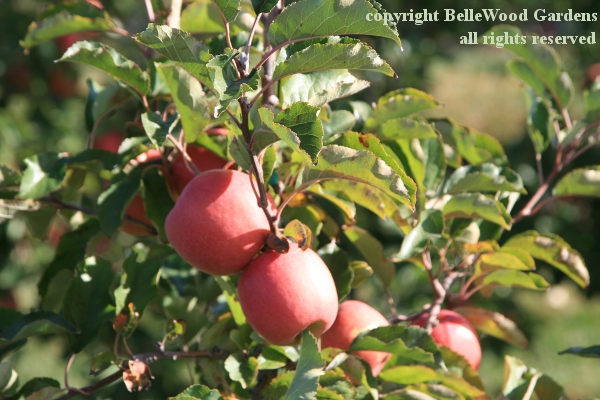
.
If you have any comments, observations, or questions about what you read here, remember you can always Contact Me
All content included on this site such as text, graphics and images is protected by U.S and international copyright law.
The compilation of all content on this site is the exclusive property of the site copyright holder.
Apple Picking at Snyder Research Farm
Wednesday, 26 October 2016
This monthly meeting of the Tohickon Garden Club is not exactly a typical meeting. We go on trips to gardens both public and private. We have lectures. Today - well, today is different. We are going on a trip to the Clifford E. and Melda C. Snyder Research and Extension Farm of Rutgers University. We've been here before, but as I said, today is different. We'll be picking apples both for ourselves and for a food bank. So on a sunny, chilly, rather windy day about half the members gather together, carpool to the farm, and get ready for a fun, informative, and productive meeting.

Snyder Research Farm is located in Hunterdon County, New Jersey,
conducting research on plant varieties and growing techniques.
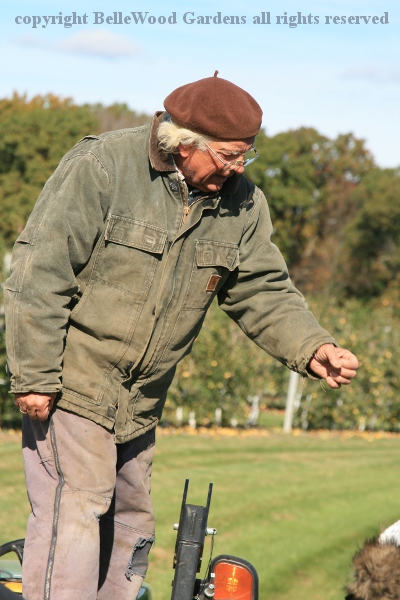
Geoff Slifer loads us onto the "hay wagon" to take us out to the growing areas. No hay, it has benches down the sides and one in the middle. He makes several stops to enthusiastically explain what we see, what they're doing, and why it matters.
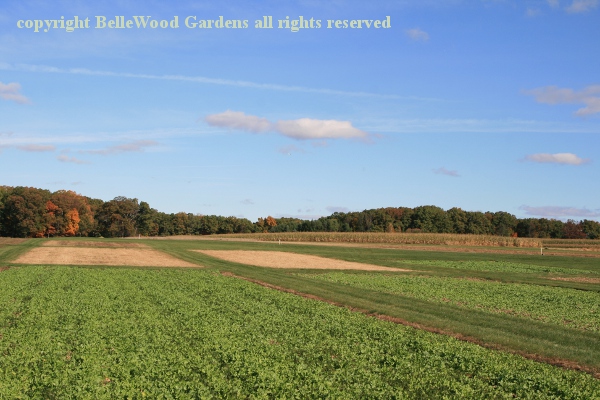
Good size trial plots. These are cover crops. Not your familiar winter wheat, buckwheat, clover. Instead, it's radishes. What say? Yes, radishes. And not even edible radishes. One advantage - their roots go down 12 to 18 inches. So when the chisel plow furrows the fields in spring there's organic matter to a good depth in the soil. The seed can even be spread from the air, something some local farmers are doing prior to harvesting field corn. The downside is that the radishes are killed with a hard frost. And they stink as they rot.
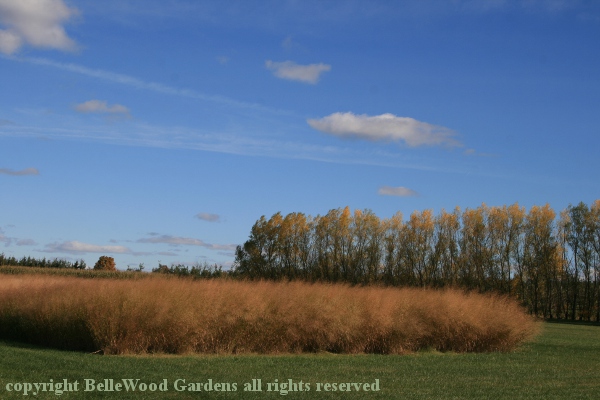
Another trial plot. Switchgrass, Panicum virgatum, native to the tall grass prairies, is being studies as a biomass crop for ethanol production. It can be grown on marginal land considered unsuitable for row crop production. Once established (which can be difficult) switchgrass has a much lower need for fertilizer than corn. Drawback - it is bulky to transport to a processing facility. Wood Crest Farm in Wapwallopen, Pennsylvania has an on-farm processing plant to turn switchgrass into pellets. Smaller scale use might be as fuel for pellet stove for home heating or, large scale, for producing electric energy.
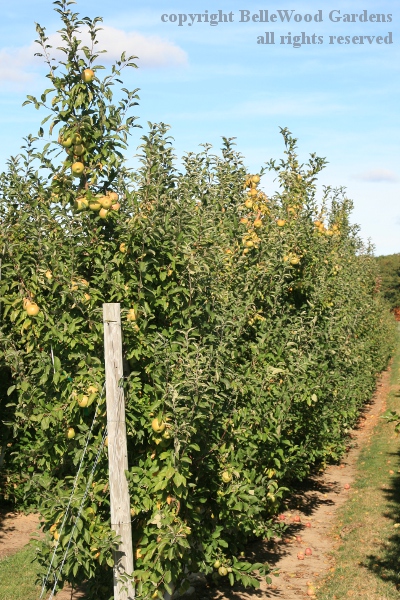
Interesting, but we're here for the apples. An ongoing research project is high spindle orcharding of apples. Trees are planted very close together in rows 12 feet apart, 1,000 trees per acre. Root growth is so scanty that trees are grown on post and wire trellis system. They fruit early
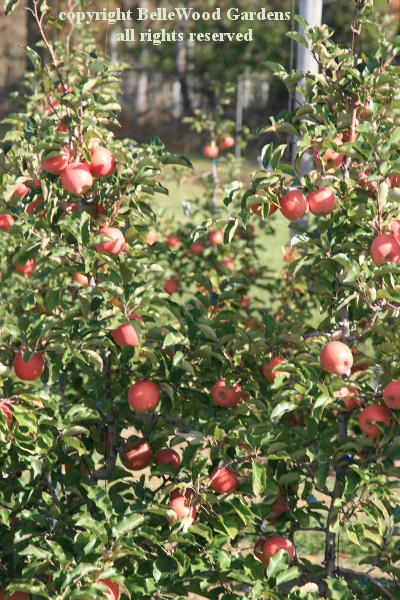
and they fruit well. I asked how long they live as standard apple trees survive and thrive for a century or more. This system is so new that no one knows for sure. It's front end loaded - cost of so many trees, cost to plant, cost of support system. But the trees begin to bear in just a couple of years. And it is easy to rip them out and replace with the latest highly popular apple variety. Just consider the premium we pay for Honeycrisp apples compared to Macintosh.
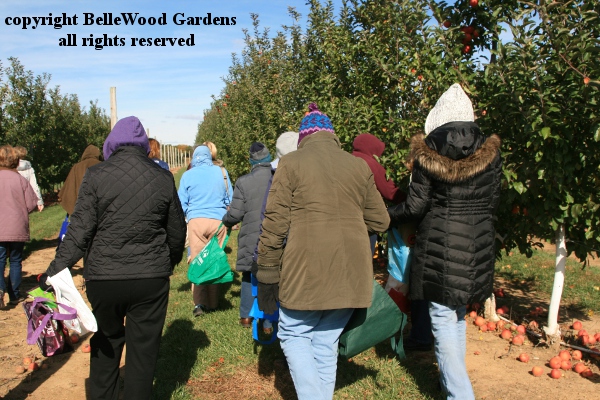
Here we go, off the hay wagon and going to pick Autumn Gala apples.
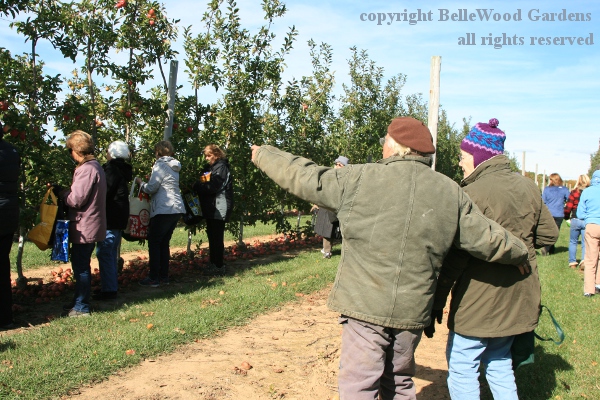
"Over there." Geoff says as he points to the row from which we can pick.
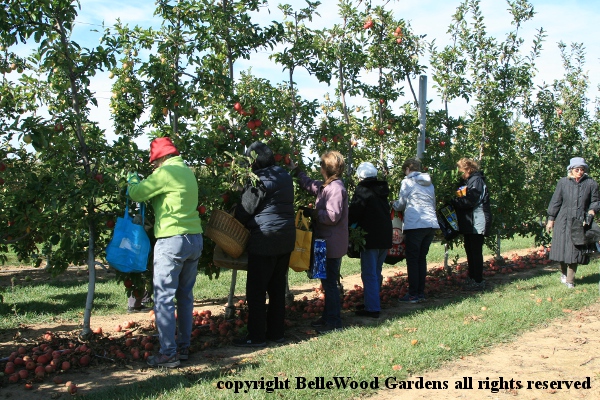
As well as Autumn Gala we'll be picking SunCrisp.
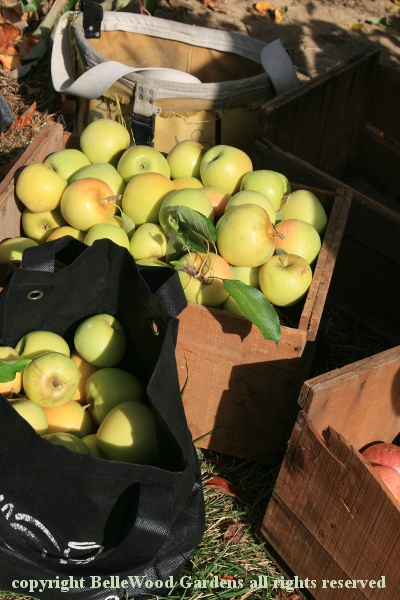
SunCrisp is a crisp, firm yellow apple with a red blush. Known as NJ55 when it was in trials, SunCrisp is the result of cross-breeding Golden Delicious, Cortland, and Cox's Orange Pippin apples. It was developed at Rutgers University by Dr. Fred Hough, a now retired fruit breeder.
"This is fun!" an enthusiastic member said as she picked another apple, and another, and another. "Yes," said Geoff, "for the first 15 minutes. It's not as much fun after 8 hours. Your shoulders hurt, your back is sore. It's work, not fun." But what's that old saying about many hands make light work . . . As well as the apples we each took home our group picked over 800 pounds of apples for the food bank.
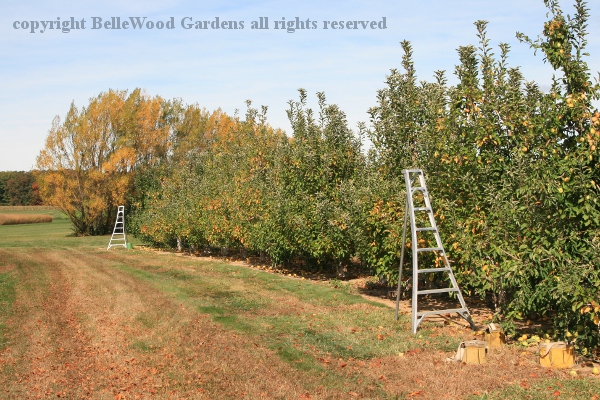
Geoff didn't let us up the ladders though, or we could have picked more.
Time for lunch. The hostesses for this month's meeting brought six crock pots, each with a different soup. Plugged in, in the meeting room, when we arrived at the research center so the soups were nice and hot. Welcome on this brisk windy day. And homemade breads. And desserts. As I was about to take a bowl and choose a soup Geoff said that if I wanted crab apples, now was the time to go get them. No need to ask again. Bowl down, camera in hand, and out the door to a golf cart.
There are different crab apples here, pollinators for the apple trees. Not named. Planted at the end of a row or the end of a trial group. Geoff would zoom up and stop. I'd hop off, pick one, bite it, say yea or nay and we'd race to another tree. And another. And another. Then search for the first tree again as it was good - somewhat tart, crisp flesh, very nice.
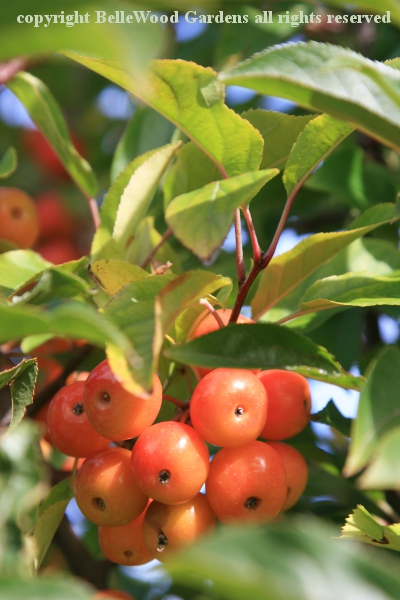
Finally started picking. A mix of three kinds of crab apples,
two bags full. Very good for my purposes.
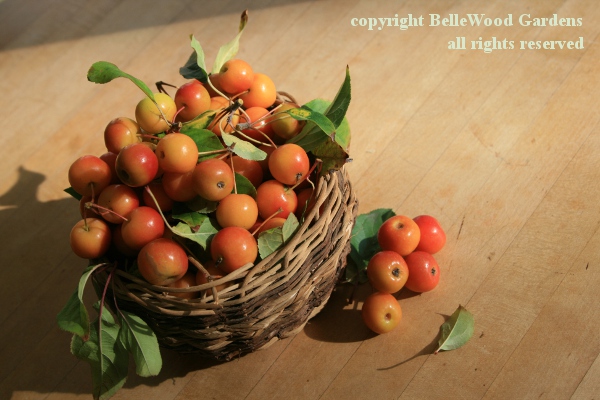
And what might be my purposes? Why, preserves - apple jelly, apple butter, pickled crab apples. Paradise jelly which combines apples, quince, and cranberries. A bonus, a lagniappe, to apple picking at the Snyder Research Farm.
Back to Top
Back to October 2016
Back to the main Diary Page